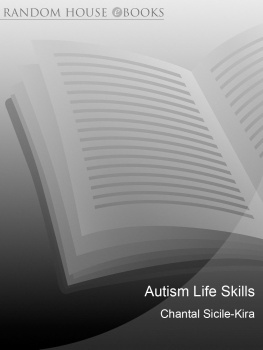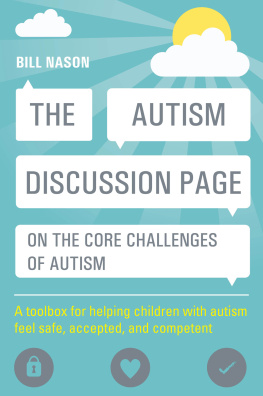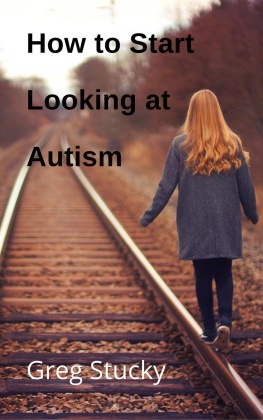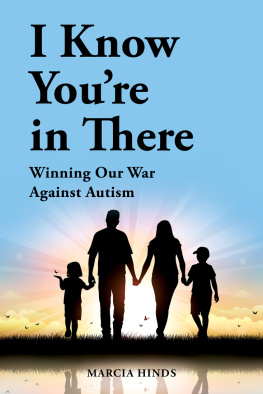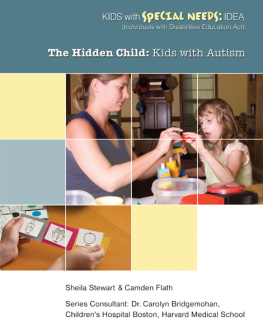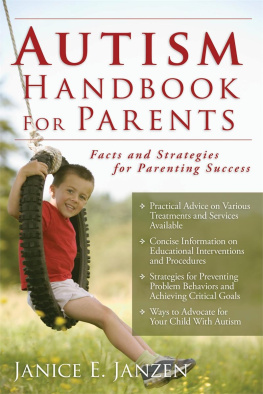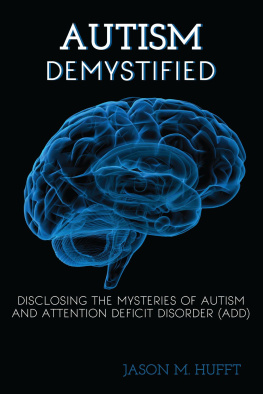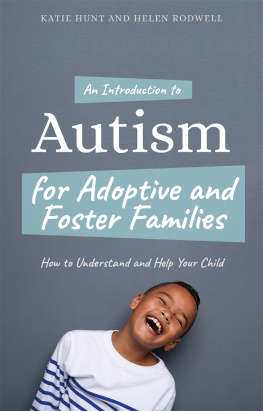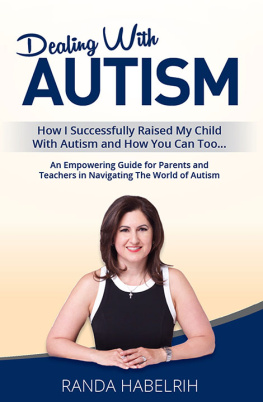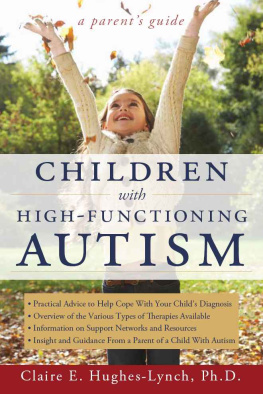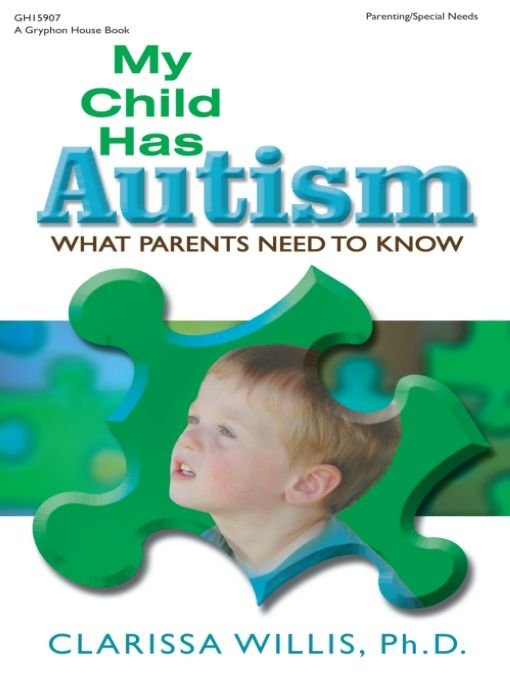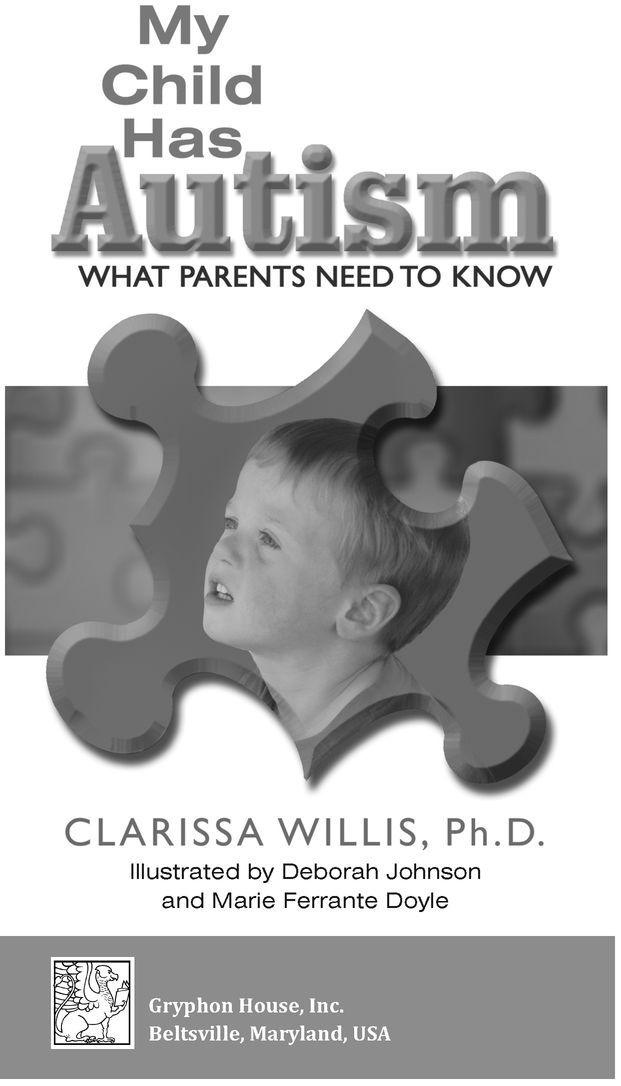Table of Contents
Bulk purchase
Gryphon House books are available for special premiums and sales promotions as well as for fund-raising use. Special editions or book excerpts also can be created to specification. For details, contact the Director of Marketing at Gryphon House.
Disclaimer
Gryphon House, Inc. and the author cannot be held responsible for damage, mishap, or injury incurred during the use of or because of activities in this book. Appropriate and reasonable caution and adult supervision of children involved in activities and corresponding to the age and capability of each child involved, is recommended at all times. Do not leave children unattended at any time. Observe safety and caution at all times.
Note: Because three out of four children diagnosed with autism are boys, this book typically uses the male pronoun when discussing children with autism, though does occasionally use the female pronoun, in order to represent the female portion of children who have autism.
Introduction
When Nathan was created, there was a microscopic change,
which occurred randomly in nature. We dont know why it
happened, and we didnt cause it to happenweve always tried
to do our best with him, even if it was not what his therapists
thought we should be doing. Please remember, Nathan is
valued by his familyhe is a joy and a gift. In fact, when he was
almost a year old, we discovered the name Nathan means
Gift.
Helen Lane, mother of Nathan
There are no words that adequately describe what happens when parents learn that their child has autism. Some parents feel profound grief, while others struggle to gather as much information as possible. Still other families frantically seek out second, third, and even fourth opinions. Families often go through distinct cycles that range from grief and loss to shopping for a cure and, finally, to an acceptance of what is.
Even with the technological advances in the medical field, we still do not know what causes autism or why it affects boys four times more often than girls. What we do know however, is that one child in every 150 will be diagnosed with autism.
This book is for families of young children with autism spectrum disorder. The information and ideas in this book reflect the authors 30 years of experience as a teacher, speech pathologist, early interventionist, and consultant with children with autism and their families.
Although each child with autism is unique, it is possible to make some generalizations. Most children with autism spectrum disorder will have varying degrees of difficulty with behavior, communication skills, ability to relate to others, and, in some cases, their ability to learn in the same way that typically developing children learn. While there is no cure for autism, there is hope. With structured early intervention, consistent behavior management, and speech and language intervention, many individuals with autism lead productive lives.
Today, many treatments for autism are available. While some of these treatments are under debate, others are based on years of sound scientific research. However, most professionals agree that each child with autism is special and has his or her own set of strengths and weaknesses, and that each child falls somewhere within the spectrum, exhibiting either more or less of certain characteristics. This book will explain autism, discuss the major characteristics associated with autism, and offer some easy-to-use strategies for helping children with autism function in their homes, at school, and in the community.
The following statement sums it up best, Autism isnt something a person has, or a shell someone is trapped inside. There is no normal child hidden behind the autism.... Autism is a way of being. (Jim Sinclair, 1993)
Chapter
Putting the Pieces Together to Understand This Puzzle Called Autism
Autism is a puzzle, you know all the pieces are there, and you
just have to figure out a way to put them all together. But once
you do it, is exciting to see the whole of it and to know that no
matter what happens next you have done your best.
Richard, the father of Brian
What Is Autism?
Children with autism have been around long before autism had an official name. In 1943, Leo Kanner first defined autism when he described 11 children with similar characteristics. The following year, Hans Asperger described a group of children with behavior issues. Although they had never met, both men used identical terms to describe the disorder.
The most accepted definition of autism is a person with delayed or typical behaviors in the following categories:
Interaction with others (socializing),
Communication (responding to others), and
Behavior (hand wringing or rocking back and forth, for example).
This definition is from the Diagnostic and Statistical Manual of Mental Disorders, Fourth Edition-Text Revision, or DSM-IV-TR, which is a manual used by the American Psychological Association.
The American Autism Society defines autism as a complex developmental disability that typically appears during the first three years of life.
With new research and information, we are learning more about diagnosing and treating autism than ever before. Unfortunately, the more that experts learn about autism, the more questions they discover they have about autism that, according to the National Institutes of Health, may affect as many as one in every 500 children.
According to the Center for Disease Control, this disorder may affect as many as one in every 150 children.
Regardless of how autism is defined, you will need the following:
Up-to-date, accurate information about the primary characteristics of autism;
A strong support system that includes specialists such as early interventionists, special education teachers, speech pathologists, and occupational therapists;
A positive relationship with your childs teacher so that together you can share the childs successes and challenges; and
Information about how to help with your childs behavior, communication skills, social skills, and self-help skills.
Why Is It Called Autism Spectrum Disorder?
Autism is described as a spectrum disorder because children with autism have characteristics that range from very mild to quite severe. Using the term autism spectrum disorder, or ASD, means a child falls somewhere along that range, or continuum. Because it is a continuum, a child may be at the mild end in terms of ability to learn new skills, and at the severe end in terms of behavior. In this book, autism is used to refer to a child who has autism spectrum disorder.
Although each child with autism is unique, specialists generally agree that all children with autism spectrum disorders have difficulty in varying levels of:
Language and communication,
Social relationships, and
Response to sensory stimuli.
In addition, children with autism may display behaviors that are not typical of their peers. For example, many young children with autism have gaps in their development ranging from developing skills out of the typical sequence of acquisition to fixating on particular objects, such as a puzzle or a rotating fan. Parents often describe children with autism as being like pieces of Swiss cheesethere are gaps or holes in what they learn, how they learn it, and how they respond to their world.


